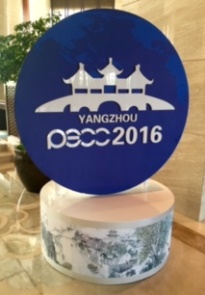 APEC Economic Leaders approved the “APEC Connectivity Framework” in Bali in 2013, pledging to “reach a seamlessly and comprehensively connected and integrated Asia-Pacific through the pillars of physical connectivity, institutional connectivity and people-to-people connectivity”. The 2014 Beijing APEC Economic Leaders’ Meeting endorsed the “APEC Connectivity Blueprint for 2015-2025”, which called on the APEC economies to take agreed actions and meet agreed targets to strengthen the tri-pillar connectivity by 2025. Last year, APEC Economic Leaders re-affirmed the above-mentioned commitment in Manila.
APEC Economic Leaders approved the “APEC Connectivity Framework” in Bali in 2013, pledging to “reach a seamlessly and comprehensively connected and integrated Asia-Pacific through the pillars of physical connectivity, institutional connectivity and people-to-people connectivity”. The 2014 Beijing APEC Economic Leaders’ Meeting endorsed the “APEC Connectivity Blueprint for 2015-2025”, which called on the APEC economies to take agreed actions and meet agreed targets to strengthen the tri-pillar connectivity by 2025. Last year, APEC Economic Leaders re-affirmed the above-mentioned commitment in Manila.
Fully recognizing its pivotal role in promoting economic growth and sustainable development, many regional organizations and economies have taken their own connectivity-related initiatives apart from or even prior to the APEC’s Blueprint. ASEAN formulated its Master Plan on Connectivity in 2010, which has made considerable progress and hence will be renewed in September this year. Pacific Alliance on its part has also taken a number of connectivity-related initiatives within the member economies.
Asia-Pacific Connectivity is not only the prerequisite for realizing the regional economic integration, but also indispensable to revitalizing the economy and promoting the long-term inclusive growth and sustainable development. Based on such premises, this symposium provided an occasion to explore the pathways to connect various connectivity initiatives within the region, facilitating the building of a seamlessly and comprehensively connected and integrated Asia-Pacific.
Agenda of Symposium, "Connecting the Connectivities":
Session 1. The Inner Links between the Regional and Sub-regional Connectivity Initiatives and the Opportunities and Challenges for Connecting these Initiatives
Session 2. Physical Connectivity: Sharing Experiences and Exploring the Practicable Ways of Interconnecting Various Initiatives
Session 3. Institutional Connectivity: Sharing Experiences and Exploring the Practicable Ways of Interconnecting Various Initiatives
Session 4. People-to-People Connectivity: Sharing Experiences and Exploring the Practicable Ways of Interconnecting Various Initiatives
Session 5. Recommendations for Connecting the Connectivity-related Initiatives within the Asia-Pacific Region
Hosted by the Chinese committee for PECC and supported by the Yangzhou local government, the Symposium was held back-to-back with PECC Standing Committee meeting.
